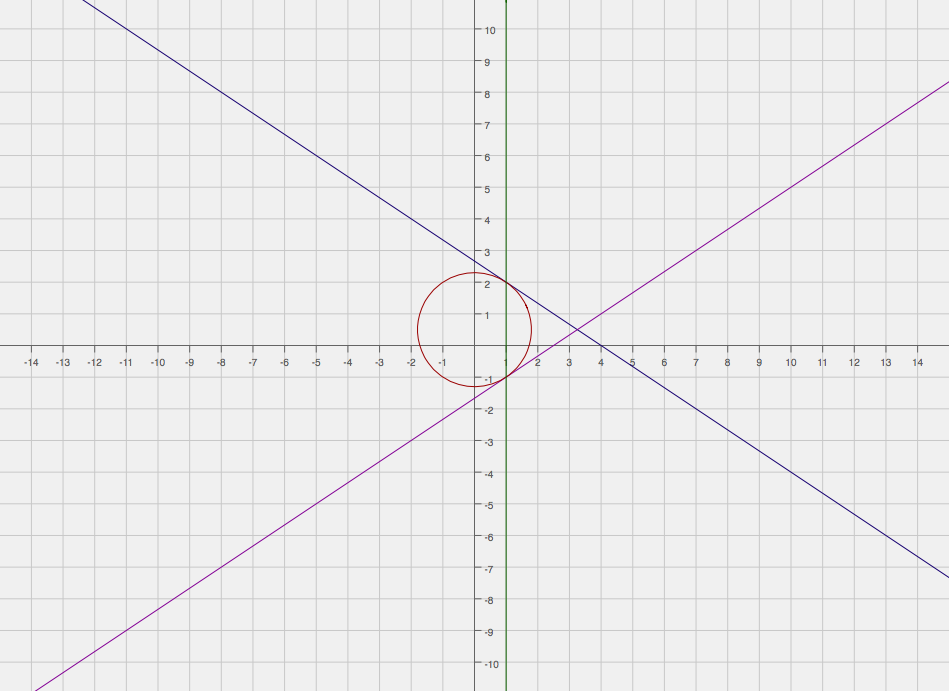Question #75aa3
2 Answers
(1) : The Angle btwn. tgts. is
(2) : The tgts. intersects at pt.
Explanation:
Eqn. of the Circle
To find the eqns. of Tangents, (tgts.) say
points (pts.) where
pts. To this end, we put
Hence, the pts. of contact of tgts. with
Knowing that
Hence, the Angle btwn. them
To find, the tgts.' pt. of int., we solve the eqns. of
rArr 3/2*3/2+1=x=13/4.#
Enjoy Maths.!
The angle formed between the tangents is approximately
Explanation:
When
#(1)^2 + y^2 - y - 3 =0#
#y^2 - y - 2 = 0#
#(y -2)(y + 1) = 0#
#y = 2 or -1#
We now find the equations of these tangents, by finding the derivative. Use implicit differentiation.
#2x + 2y(dy/dx) -(dy/dx) = 0#
#2y(dy/dx) - dy/dx = -2x#
#dy/dx(2y - 1) = -2x#
#dy/dx= (-2x)/(2y- 1)#
The slope of the two tangents are;
#(-2(1))/(2(2) - 1) = -2/3# and#(-2(1))/(2(-1) - 1) = 2/3#
We now find their equations:
For line
#y- 2 = -2/3(x- 1)#
#y - 2= -2/3x + 2/3#
#y = -2/3x + 8/3#
For line
#y - (-1) = 2/3(x- 1)#
#y + 1 = 2/3x- 2/3#
#y = 2/3x - 5/3#
We now find the point of intersection between these two lines.
#2/3x - 5/3 = -2/3x + 8/3#
#4/3x = 13/3#
#12x = 39#
#x = 13/4#
#y = 2/3(13/4) - 5/3 = 13/6 - 5/3 = 3/6 = 1/2#
Therefore, the point of intersection is
Point
Point
Point
We now find the distances between each point.
#d_(AB) = sqrt((2 - 1/2)^2 + (13/4 - 1)^2) = sqrt(9/4 + 81/16) = 3/4sqrt(13)#
#d_(BC) = sqrt((2 - (-1))^2 + (1 - 1)^2) = sqrt(9) = 3#
#d_(AC) = sqrt((-1 - 1/2)^2 + (1 - 13/4)^2) = sqrt(9/4 + 81/16) = 3/4sqrt(13)#
Therefore, this is an isosceles triangle. We now find the measure of angle
#costheta = (AB^2 + AC^2 - BC^2)/(2 * AB * AC)#
#costheta = ((3/4sqrt(13))^2 + (3/4sqrt(13))^2 - 3^2)/(2 * 3/4sqrt(13) * 3/4sqrt(13)#
#costheta = (90/16)/(9/8(13))#
#costheta = 10/26 = 5/13#
#theta ~~ 67.38˚#
Here's a graphical depiction of what's going on here:

Hopefully this helps!

